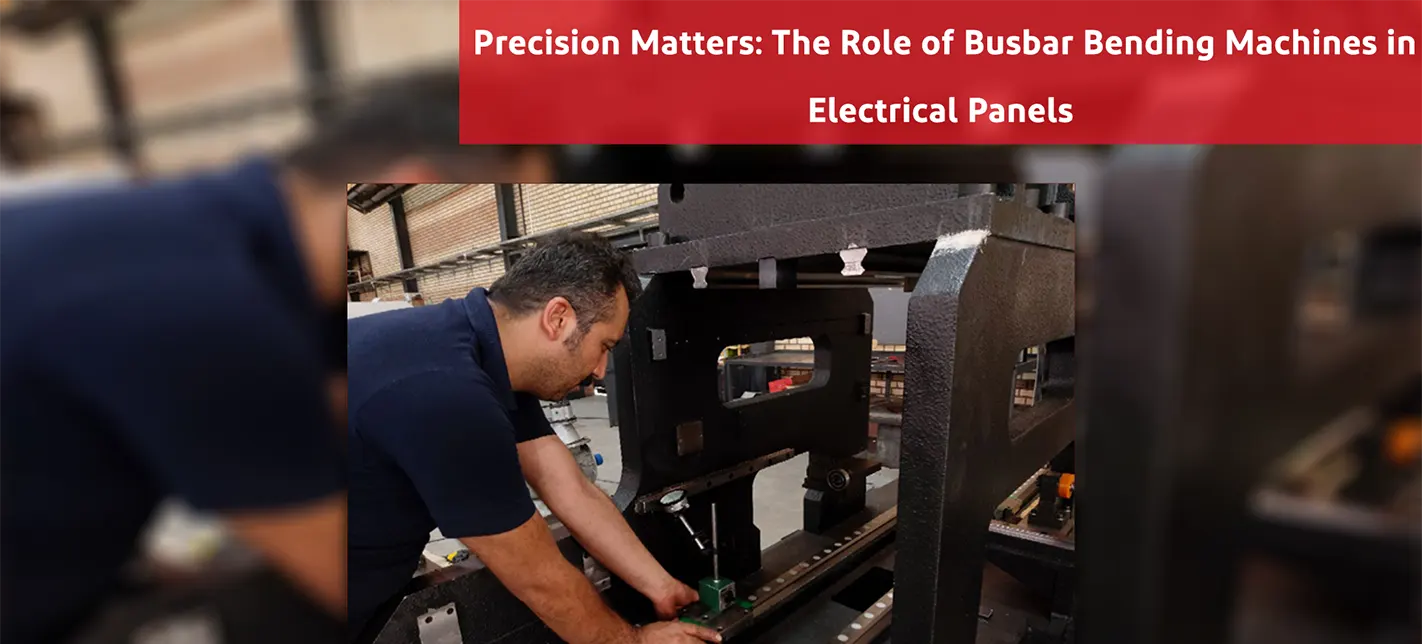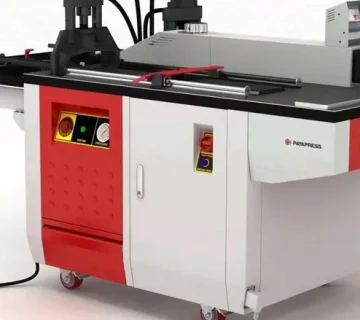In the intricate world of electrical engineering, precision is not just a requirement—it is a necessity. The efficiency, safety, and performance of electrical panels heavily rely on the meticulous fabrication of busbars. These busbars are essential components that conduct electricity within electrical systems. This article explores the critical role of busbar bending machines in ensuring precision and reliability in electrical panels. We will delve into the various types of busbar bending machines, their applications, and the advancements in this technology.
Understanding Busbar Bending Machines
Busbar bending machines are specialized tools designed to bend and shape busbars, which are flat strips or bars made of metals like copper or aluminum. These busbars are crucial in electrical panels, switchgear, and distribution systems. They conduct electricity and often serve as the primary connection points between different electrical components.
Types of Busbar Bending Machines
Busbar bending machines come in various types, each suited to different applications and operational needs:
Manual Busbar Bending Machines
Manual busbar bending machines are the most basic type, operated entirely by hand. These machines are suitable for small-scale operations and workshops where the demand for high precision is not critical. They are cost-effective but require significant manual effort and skill to achieve the desired bends.
Hydraulic busbar bending machines utilize hydraulic pressure to achieve the bending force. These machines provide high force and precision, making them ideal for bending thick and rigid busbars. They are commonly used in industrial settings where accuracy and efficiency are paramount. Hydraulic machines can handle both copper and aluminum busbars with ease.
Electric Busbar Bending Machines
Electric busbar bending machines use electric motors to generate the bending force. These machines offer a balance between manual and hydraulic machines in terms of precision and ease of use. They are suitable for a range of applications, from small workshops to industrial environments.
CNC Busbar Bending Machines
Computer Numerical Control (CNC) busbar bending machines are advanced models equipped with programmable controls and automation capabilities. These machines offer high precision, repeatability, and are suitable for complex bending tasks. CNC machines can handle high-volume production with consistent quality, making them ideal for large-scale industrial applications.
Portable Busbar Bending Machines
Portable busbar bending machines are compact and mobile, designed for on-site operations. They are particularly useful in scenarios where busbars need to be bent and installed in situ, such as construction sites and field installations. Despite their size, these machines can deliver precise bends necessary for reliable electrical connections.
The Importance of Precision in Busbar Bending
Precision in busbar bending is critical for several reasons:
- Electrical Efficiency
Properly bent busbars ensure optimal electrical conductivity, reducing resistance and energy loss. This efficiency is crucial for maintaining the performance and reliability of electrical systems.
- Safety
Accurate bends prevent electrical faults and short circuits, enhancing the safety of electrical panels. Poorly bent busbars can lead to loose connections, overheating, and potential fire hazards.
- Space Optimization
Precise bending allows for efficient use of space within electrical panels, facilitating better organization and maintenance. This is particularly important in complex systems where space is at a premium.
- Mechanical Integrity
Correctly bent busbars maintain their structural integrity, ensuring long-term reliability and performance. This mechanical stability is essential for withstanding the stresses and strains of electrical currents over time.
Key Processes in Busbar Fabrication
Busbar fabrication involves several key processes, each requiring specific equipment and techniques:
- Punching
Punching involves creating holes or slots in the busbar for connections. Automatic punching machines and CNC busbar punching machines are commonly used for this task. These machines ensure precise and clean holes, which are essential for secure connections and minimal electrical resistance.
- Bending
Bending is the process of shaping the busbar to fit specific configurations within the electrical panel. This is where busbar bending machines come into play, offering various methods such as hydraulic, electric, and CNC bending. Each type of machine provides different levels of precision and force, catering to various bending requirements.
- Cutting
Cutting the busbar to the required length is another crucial step in the fabrication process. Busbar cutting machines are used for this purpose. Accurate cutting ensures that busbars fit perfectly within the panel, contributing to the overall precision and reliability of the electrical system.
Choosing the Right Busbar Bending Machine
Selecting the appropriate busbar bending machine depends on several factors:
- Material Type
The type of metal used (copper or aluminum) affects the choice of machine. Hydraulic and CNC machines are suitable for both materials due to their high precision and force capabilities. Copper busbars are more common due to their superior electrical conductivity, but aluminum busbars are also used for their lighter weight and cost-effectiveness.
- Bending Requirements
The complexity and precision of the bends required will determine whether a manual, hydraulic, or electric machine is needed. For simple bends, manual machines may suffice, but for intricate and precise bends, hydraulic machines are the best choice.
- Production Volume
For high-volume production, PAYAPRESS hydraulic machines are preferred due to their automation features and efficiency. These machines can handle large quantities of busbars with consistent quality, reducing the time and labor required for manual bending.
- Budget
The cost of the machine is a significant consideration. Manual machines are the most affordable, while CNC machines are the most expensive due to their advanced features. Businesses need to balance their budget with their production needs and the required level of precision.
Innovations in Busbar Bending Technology
Recent advancements in busbar bending technology have further enhanced precision and efficiency:
- Spring Back Compensation
This feature compensates for the natural tendency of metal to spring back after bending, ensuring accurate angles and shapes. Spring back compensation is particularly important for achieving precise bends in thick and rigid busbars.
- Programmable Controls
Machines equipped with programmable controls, such as those from PAYAPRESS, allow for precise and repeatable bends. Digital rulers and automated settings reduce the margin of error and increase productivity, making these machines ideal for high-precision applications.
- Automation
Automation features in hydraulic machines streamline the bending process, reducing manual intervention and increasing consistency. Automated systems can handle multiple bending tasks simultaneously, improving overall efficiency and reducing the risk of human error.
Applications of Busbar Bending Machines
Busbar bending machines are used in various applications within the electrical industry:
- Switchgear and Distribution Systems
Switchgear and distribution systems rely on precisely bent busbars to ensure efficient and safe electricity distribution. Accurate busbar bending is essential for maintaining the reliability and performance of these systems.
- Electrical Panels
In electrical panels, busbars connect different components, and accurate bending is essential for optimal performance. Properly bent busbars ensure secure connections, reducing the risk of electrical faults and enhancing the overall safety of the panel.
- 3. Industrial Machinery
Busbars are used in industrial machinery to distribute power, and precise bending ensures reliable operation. Accurate busbar bending is crucial for maintaining the performance and safety of industrial equipment.
- Construction Sites
Portable busbar bending machines are used on construction sites for temporary power distribution systems. These machines provide the flexibility and precision needed for on-site installations, ensuring that electrical connections are secure and reliable.
Conclusion
In conclusion, busbar bending machines play a vital role in the fabrication of electrical panels, ensuring precision, efficiency, and safety. From manual to Hydraulic bending machines, each type offers unique advantages tailored to specific bending requirements. As technology advances, innovations such as spring back compensation and programmable controls continue to enhance the capabilities of these machines, making them indispensable tools in the electrical industry.
By understanding the different types of busbar bending machines and their applications, businesses can make informed decisions to optimize their busbar fabrication processes. This optimization ultimately contributes to the reliability and performance of electrical systems. Whether it’s a hydraulic busbar bending machine for industrial use or a portable busbar bending machine for on-site operations, precision matters in every bend. The continuous advancements in busbar bending technology promise even greater improvements in efficiency and accuracy, ensuring that electrical panels remain safe, reliable, and efficient for years to come.




No comment